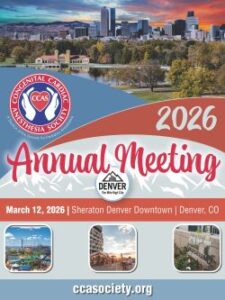Authors: Christopher Busack MD, Chinwe Unegbu MD, and Daniela Perez-Velasco DO – Children’s National Hospital
A 3-month-old female patient presents with failure to thrive. Echocardiography reveals severe LV dysfunction, severe mitral regurgitation, and an anomalous origin of the left coronary artery from the pulmonary artery (ALCAPA).Which operative intervention MOST LIKELY reduces the risk of in-hospital death in patients undergoing surgical repair of ALCAPA?
EXPLANATION
Anomalous origin of the left coronary artery from the pulmonary artery (ALCAPA) comprises less than 1% of congenital heart defects. There are two clinical phenotypes: (1) infants with an absence of adequate collateral circulation from the right coronary artery (RCA) to the left side of the heart who typically present with severe heart failure symptoms within the first few months of life and (2) patients with adequate collateral supply who remain asymptomatic until adolescence or adulthood. However, patients with collateral supply remain at risk for sudden cardiac death and may present with chest pain or dyspnea on exertion. Without surgical intervention, the mortality exceeds 90% at this time. However, with surgery and current advances, the mortality at the time of ALCAPA repair is less than 10%. Echocardiography is the mainstay of diagnosis but CT angiography or magnetic resonance imaging with 3D reconstruction can be helpful. Angiography is rarely indicated except in special situations.
Although mitral regurgitation (MR) is commonly associated with ALCAPA, there is no consensus as to whether it should be surgically corrected at the time of primary repair. Obviously, correction would add ischemia time to an already severely compromised ventricle. In most cases, MR improves without intervention after surgery to correct ALCAPA alone due to improved ventricular function and reduced end-diastolic volume. However, MR persists in some cases and may require intervention later. Several recent studies indicate that repair of severe MR at the time of initial surgery can be achieved with low risk, improved outcomes, and a reduced need for reoperation. These data support a selective surgical approach for significant MR at the time of ALCAPA surgery, perhaps focusing on cases with structural defects unlikely to change with improvement in myocardial function or regression of ventricular dilation. Neither prophylactic ventricular assist device insertion nor pulmonary arterioplasty at the time of ALCAPA repair reduce the risk of in-hospital death.
REFERENCES
1. Thomas AS, Chan A, Alsoufi B, Vinocur JM, Kochilas L. Long-term Outcomes of Children Operated on for Anomalous Left Coronary Artery From the Pulmonary Artery. Ann Thorac Surg. 2022;113(4):1223-1230. doi: 10.1016/j.athoracsur.2021.07.053.
2. Yu J, Ren Q, Liu X, et al. Anomalous left coronary artery from the pulmonary artery: Outcomes and management of mitral valve. Front Cardiovasc Med. 2022;9:953420. doi: 10.3389/fcvm.2022.953420.
3. Weixler VHM, Zurakowski D, Baird CW, et al. Do patients with anomalous origin of the left coronary artery benefit from an early repair of the mitral valve? Eur J Cardiothorac Surg. 2020;57(1):72-77. doi: 10.1093/ejcts/ezz158.
